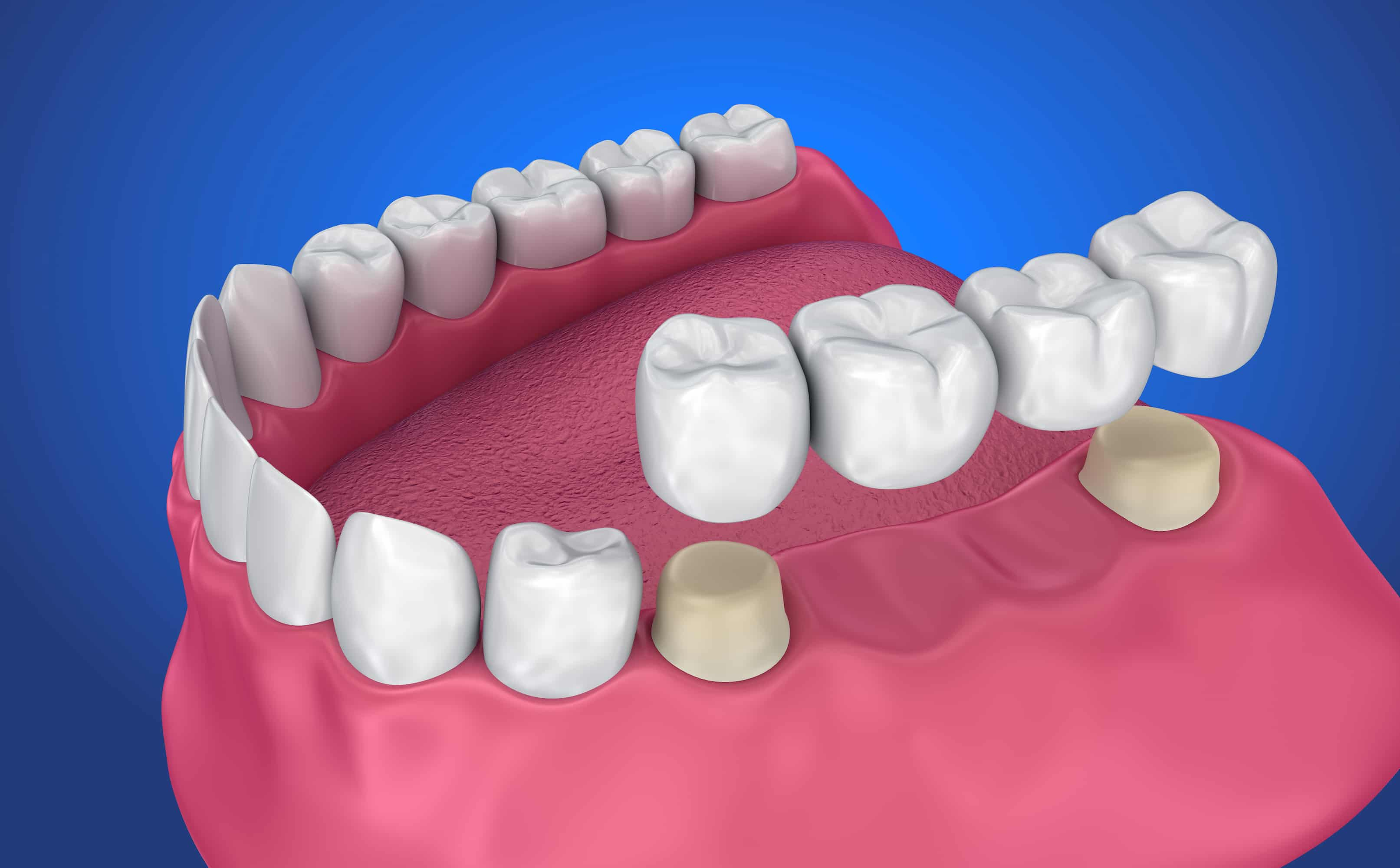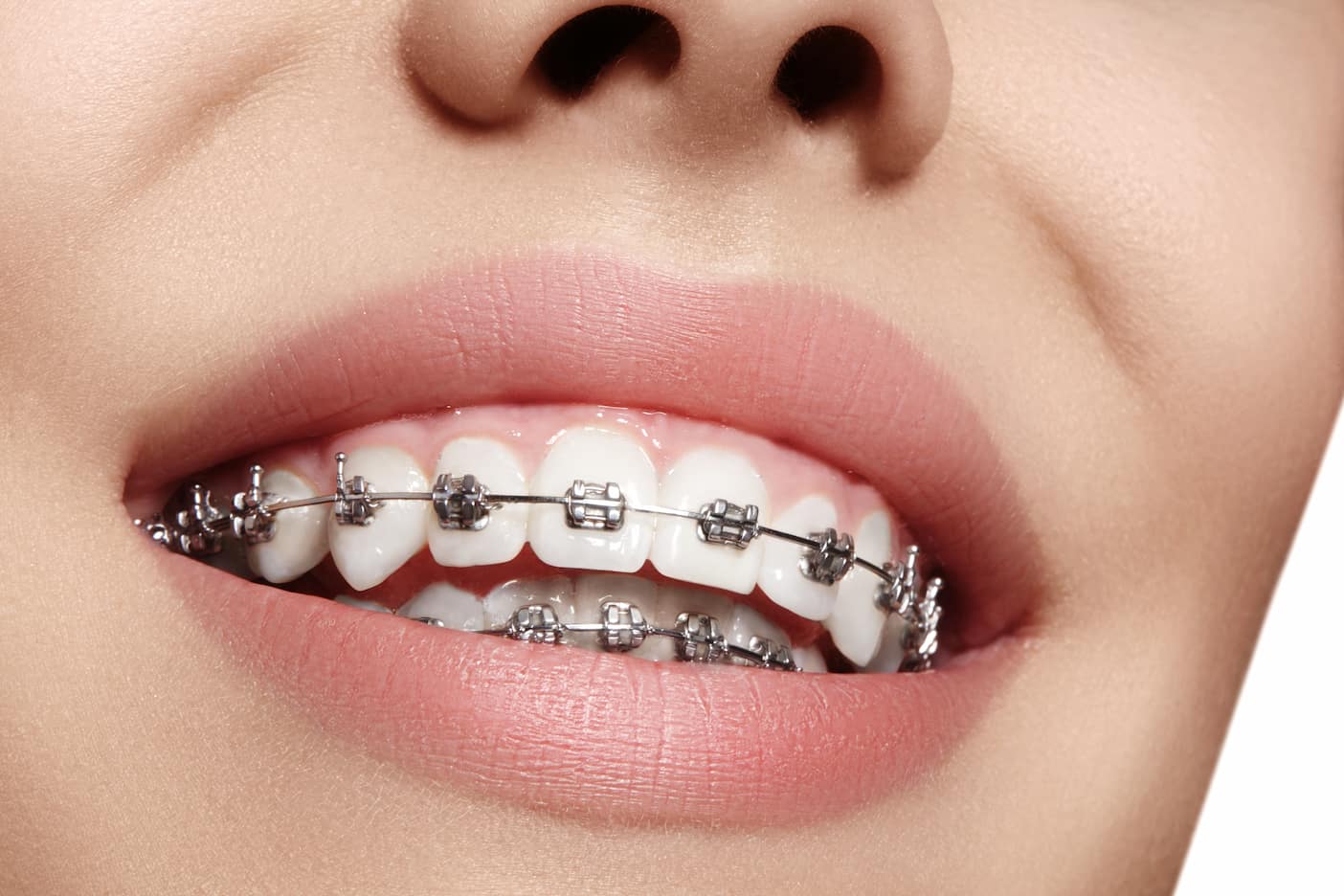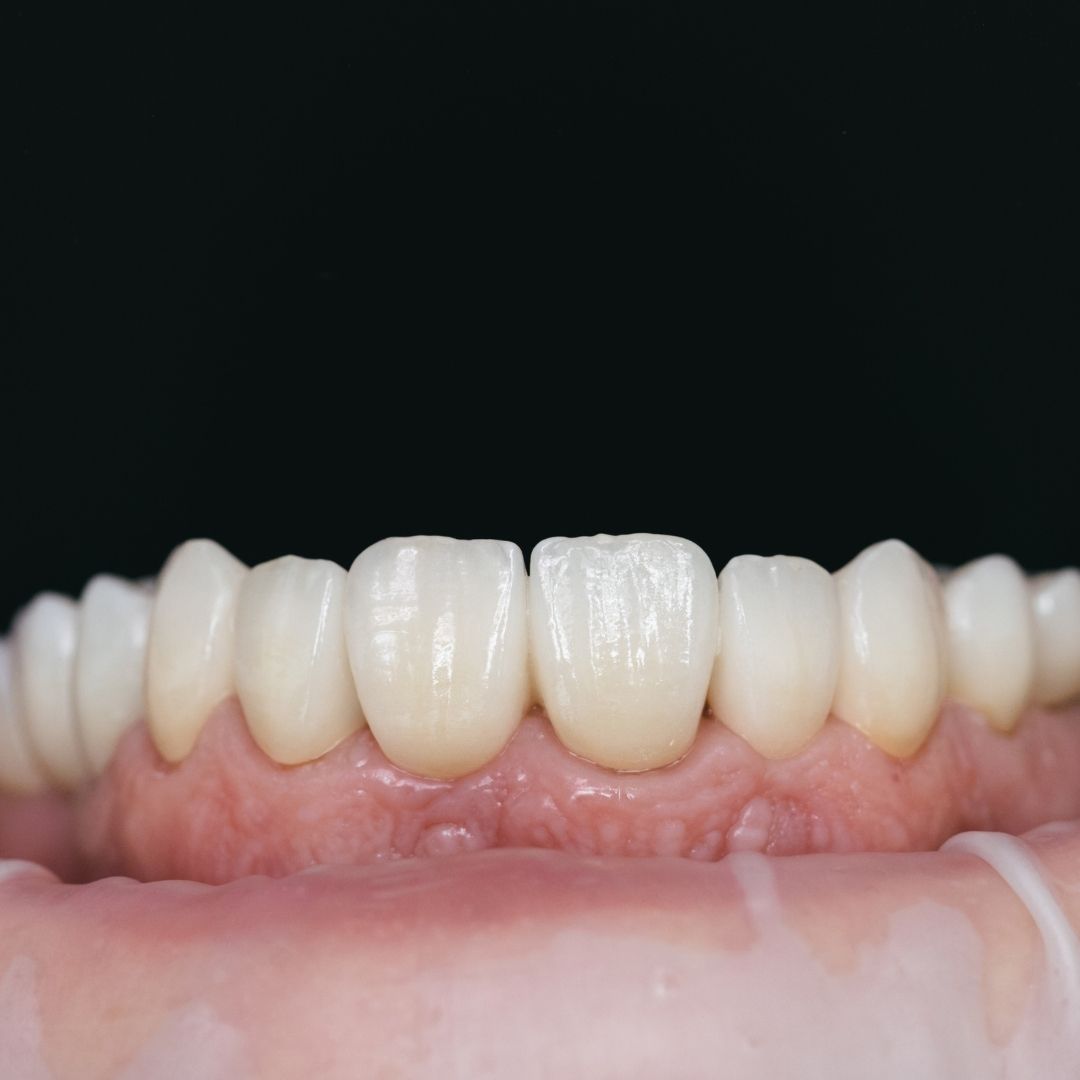
Dental Bridge
Dental bridges are a common restorative dental treatment that can be used to replace missing teeth, restore function to your bite, and improve the appearance of your smile. If you have missing teeth, you may be wondering if a dental bridge is the right option for you. In this article, we’ll answer some of the most common questions about dental bridges, including when they’re recommended, how they work, and what their lifespan is.
What Is a Dental Bridge?
A dental bridge is a type of dental restoration that is used to replace one or more missing teeth. It is a fixed prosthetic device that is anchored to the adjacent healthy teeth, known as abutment teeth, using dental crowns. The artificial teeth, known as pontics, are then attached to the crowns to fill in the gap left by the missing teeth.
Bridges can be made from a variety of materials, including porcelain, ceramic, and metal alloys. The type of material used will depend on a number of factors, including the location of the missing teeth, the strength of the abutment teeth, and the patient’s aesthetic preferences.
Dental bridges are typically recommended for patients who have one or more missing teeth and who have healthy teeth on either side of the gap. They are a popular option because they can restore the appearance of the smile, improve speech and eating, and prevent remaining teeth from shifting out of position. Dental bridges are a long-lasting solution to missing teeth and with proper care, they can last up to 10-15 years or longer.
Bridging Teeth: When Should You Get a Bridge on Your Teeth?
There are several situations in which a dental bridge may be recommended, including:
You have one or more missing teeth: Dental bridges are most commonly used to replace missing teeth. If you have gaps in your smile, a dental bridge can fill them in and restore the appearance of your smile.
You’re having trouble speaking or eating: Missing teeth can make it difficult to speak clearly or chew properly. A dental bridge can help restore function to your bite and make it easier to eat and speak.
Your teeth are shifting: When you have missing teeth, your remaining teeth can shift out of place, which can cause bite problems, gum disease, and tooth decay. A dental bridge can help prevent these issues by holding your remaining teeth in place.
You want to improve the appearance of your smile: A dental bridge can also be used to improve the appearance of your smile. If you have gaps in your teeth or are self-conscious about missing teeth, a dental bridge can help restore your confidence.
Do I Really Need a Dental Bridge?
If you have missing teeth, you may be wondering if you really need a dental bridge. While there are other options for replacing missing teeth, such as dental implants and dentures, a dental bridge may be the best option for you if:
You have healthy teeth on either side of the gap: In order to support a dental bridge, you need to have healthy teeth on either side of the gap. If your adjacent teeth are damaged or decayed, a dental bridge may not be the best option for you.
You want a permanent solution: Unlike dentures, which need to be removed and cleaned daily, dental bridges are a permanent solution. If you’re looking for a long-term solution to missing teeth, a dental bridge may be the best option for you.
You want a more affordable option: While dental implants are a popular option for replacing missing teeth, they can be expensive. Dental bridges are often more affordable and can provide a similar level of function and appearance.
Why Is a Dental Bridge Not Recommended?
While dental bridges can be a great option for many people, there are some situations in which they may not be recommended. Some reasons why a dental bridge may not be recommended include:
You have gum disease: If you have gum disease, it can weaken the support structure for your teeth, which can make it difficult to support a dental bridge.
You have weak or damaged teeth: If your teeth are weak or damaged, they may not be able to support a dental bridge.
You’re missing too many teeth: If you’re missing too many teeth, a dental bridge may not be the best option for you. In this case, a partial or full denture may be a better option.
How Many Teeth Do You Need to Hold a Bridge?
In order to support a dental bridge, you need to have healthy teeth on either side of the gap. These teeth are called abutment teeth, and they serve as anchors for the dental bridge. The number of abutment teeth you need depends on how many teeth are missing and where they are located in your mouth.
For example, if you have one missing tooth and it is located between two healthy teeth, you will only need two abutment teeth to hold the bridge in place. However, if you have two missing teeth that are not next to each other, you may need two dental bridges, each supported by one or two abutment teeth.
It’s important to note that in order to support a dental bridge, your abutment teeth need to be healthy and strong enough to support the additional weight of the bridge and the forces of chewing and biting. Your dentist will evaluate your teeth and gums to determine if a dental bridge is the best option for you.
How Do Dental Bridges Work?
Dental bridges work by replacing missing teeth with artificial teeth (pontics) that are attached to healthy teeth on either side of the gap. The process of getting a dental bridge typically involves several steps:
Preparing the abutment teeth: Your dentist will need to prepare the abutment teeth by removing some of the enamel to make room for the dental crowns that will hold the bridge in place.
Taking impressions: Your dentist will take impressions of your teeth, which will be used to create a custom dental bridge that fits perfectly in your mouth.
Creating the dental bridge: Your dental bridge will be created in a dental laboratory using the impressions of your teeth as a guide.
Placing the dental bridge: Once your dental bridge is ready, your dentist will check the fit and make any necessary adjustments before attaching it to the abutment teeth using dental cement.
What Is the Lifespan of a Dental Bridge?
The lifespan of a dental bridge depends on several factors, including the materials used, your oral hygiene habits, and how well the bridge is maintained. With proper care, a dental bridge can last for 10-15 years or even longer.
To ensure the longevity of your dental bridge, it’s important to practice good oral hygiene habits, including brushing twice a day, flossing daily, and visiting your dentist for regular checkups and cleanings. You should also avoid biting down on hard objects, such as ice or popcorn kernels, as this can damage the bridge.
The Study of Dental Bridge
A recent study conducted by the American Dental Association (ADA) in 2021 assessed the success rate of dental bridges. According to the ADA study, dental bridges have shown a high success rate, with a majority of patients experiencing minimal discomfort or complications following the procedure. The study also emphasized the importance of selecting a qualified and experienced dentist to minimize potential risks such as sensitivity to temperature changes, infection, or bridge damage.
What Is the Success Rate of Dental Bridges?
The success rate of dental bridges is high, with most patients experiencing minimal discomfort or complications. However, like any dental procedure, there are some risks involved, including:
Sensitivity to hot and cold temperatures
Infection or decay in the abutment teeth
Fracture or damage to the dental bridge
To minimize the risks associated with dental bridges, it’s important to choose a qualified and experienced dentist who can properly evaluate your teeth and gums and recommend the best treatment option for your needs.
In conclusion, dental bridges are a common and effective way to replace missing teeth, restore function to your bite, and improve the appearance of your smile. If you have missing teeth and are considering a dental bridge, talk to your dentist about whether this treatment option is right for you. With proper care and maintenance, a dental bridge can provide a long-lasting and natural-looking solution for missing teeth.



